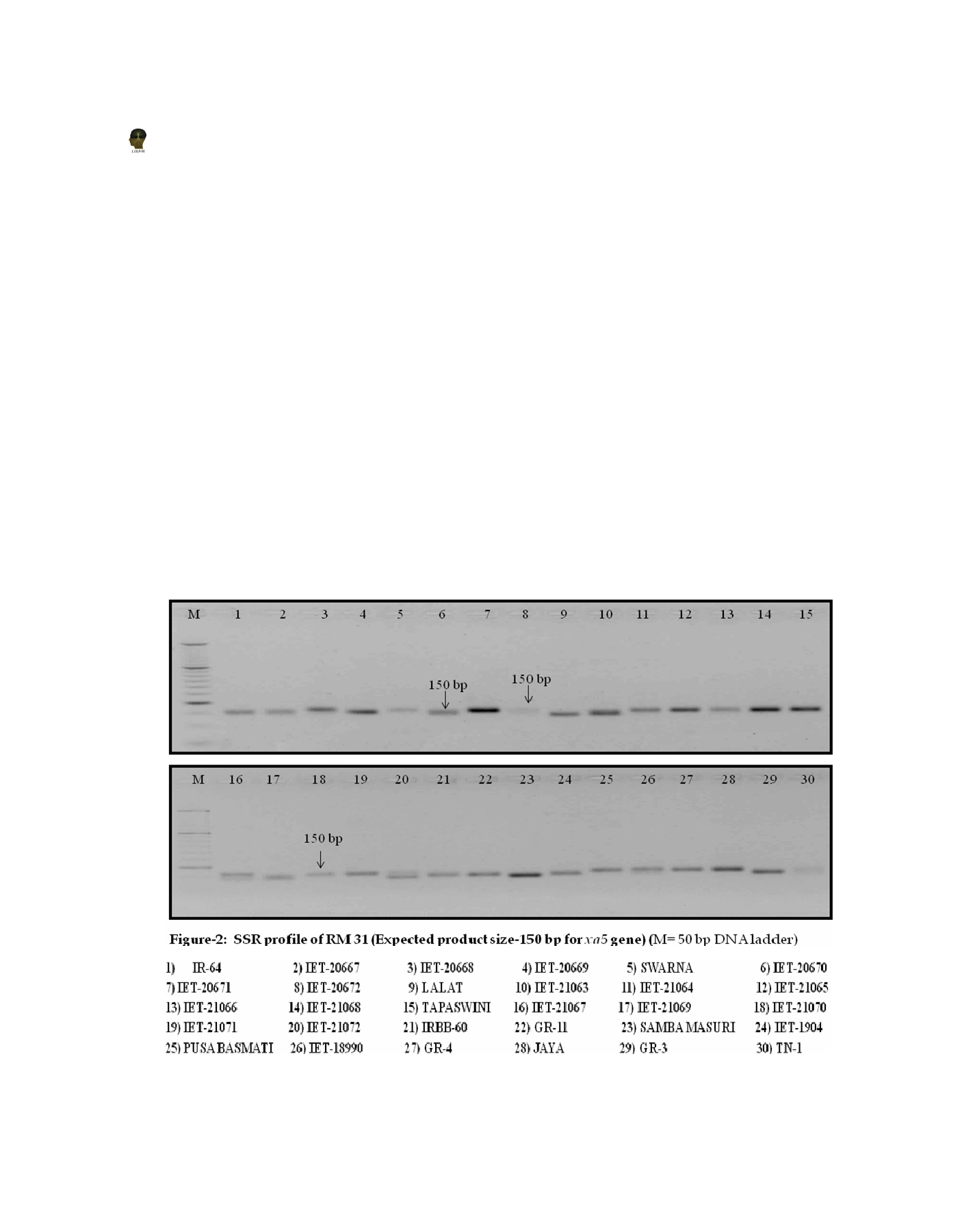
Patel et al.
and documented using gel documentation system. Each
NTSYSpc (Rohlf, 1993). A dendrogram was constructed
experiment was repeated two times with each primer and
by using the unweighted pair group method with
those primers gave reproducible bands were considered
arithmetic average (UPGMA) with the SAHN module of
for data analysis.
NTSYSpc to show a phenetic representation of genetic
relationships as revealed by the similarity coefficient
Data analysis
(Sneath and Sokal, 1973).
The RAPD and ISSR bands were scored as present (1) or
absent (0), each of which was treated as an independent
Results and Discussion
character regardless of its intensity. By comparing the
Qualitative and quantitative analysis of genomic DNA
banding patterns of genotypes for a specific primer,
genotype-specific bands were identified. Faint or unclear
The concentration of DNA was obtained between 1000
bands were not considered. The binary data generated
to 3000 ng/µl and A260/A280 was 1.84 to 2.00, as stated
were used to estimate levels of polymorphism by dividing
by Sachdev et al ., (2003). None of the DNA samples
the polymorphic bands by the total number of scored
analyzed were of poor quality.
bands. The polymorphism information content (PIC) was
calculated by the formula: PIC = 2Pi(1−Pi) (Bhat, 2002)
RAPD analysis
where, Pi is the frequency of occurrence of polymorphic
Total 80 RAPD primers were screened, of which 29
bands in different primers. Pairwise similarity matrices
primers amplified ten or more scorable bands. PCR
were generated by Jaccard’s coefficient of similarity
amplification of DNA, using these 29 primers generated
(Jaccard, 1908) by using the SIMQUAL format of
total 5118 scorable bands with 308 loci, among them
434